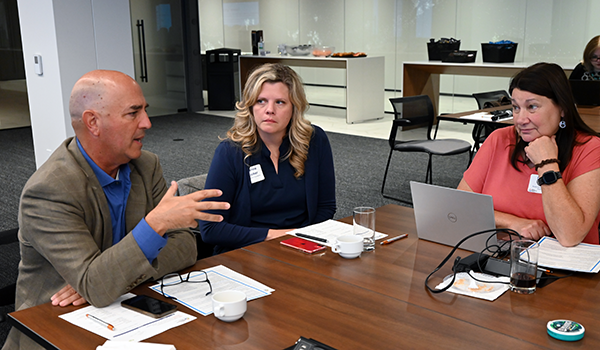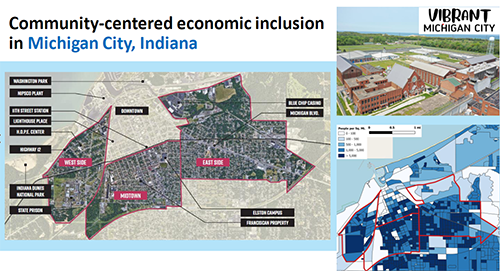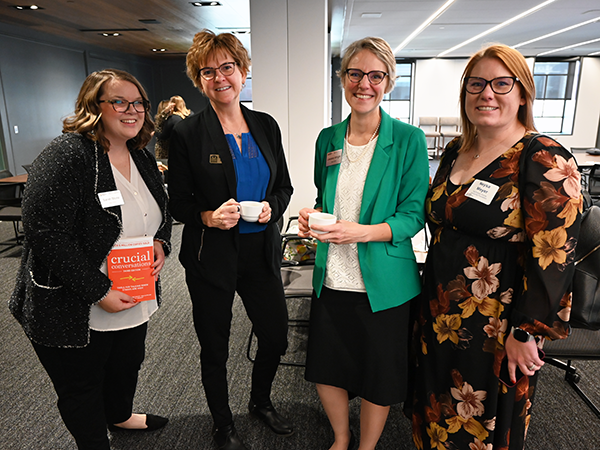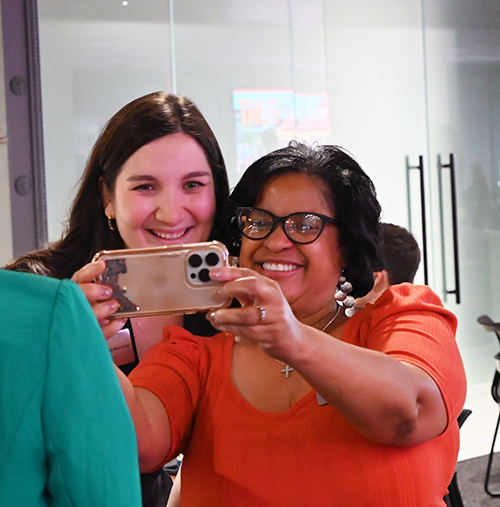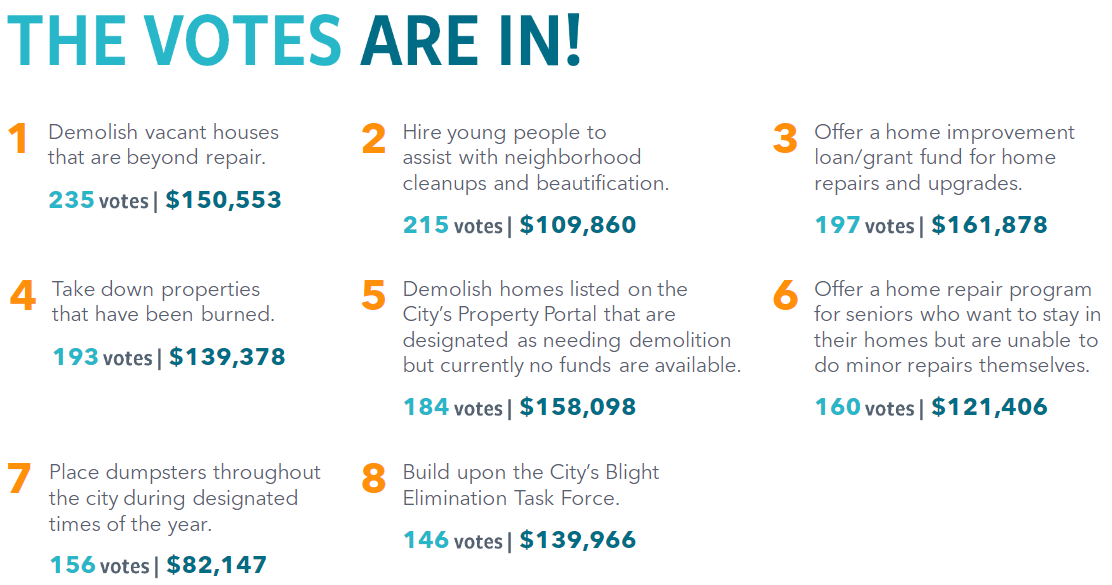Symposium Shows Path to Empowered Community Voice
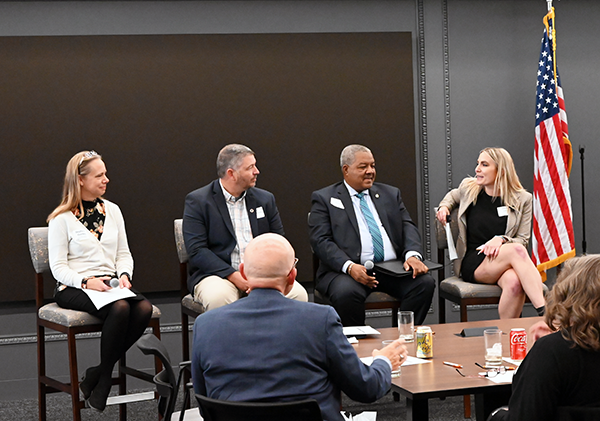
As attendees settled in at Barnes & Thornburg’s beautiful space in downtown Indianapolis last week, IPA CEO Claudia Cummings welcomed them to IPA’s third such annual event. She underlined why the topic—Centering Community Voice—was so important. “There is a realization that America is changing,” she said. “Philanthropy should be ready to embrace what we’ll look like now and in the future. We must learn how to ensure those we’re serving are being heard and at the center of our work.”
The rest of the day showed a path to making that happen.
The Effectiveness of Listening & Feedback
Megan Campbell, senior director of programs and strategy at Feedback Labs, a Washington, D.C.-based nonprofit dedicated to supporting foundations and other nonprofits in listening to and acting on feedback from those at the heart of their work, led the day’s events. “There is a real opportunity to help elevate community voice, not just in grantmaking or programs of partners,” Campbell said.
Campbell pointed out that even the act of eliciting feedback has a positive side effect: a study by the Center for Employment Opportunities found that participants who responded to feedback surveys were 5-10% more likely to be employed 90 or 180 days after initial employment. The shorter version? People want to be heard.
Using a live polling mechanism on the screen, Campbell asked attendees for their most powerful reason for centering community voice. Among the most frequent responses were building trust with grantees, creating a shared vision, making better-informed decision-making, and facilitating change.
Campbell offered five opportunities to elevate community voice:
- Moving into a new issue area or community (listening tours, community research)
- Sharing power over grantmaking decisions (advisory councils, participatory grantmaking)
- Building ongoing partner relationships (invest in partner capacity)
- Strengthening governance structures and staffing (value lived experience on board, increase staff time in community)
- Ensuring accountability and learning (community surveys, collaborate on evaluating progress)
After Campbell had everyone break into groups, she asked them to discuss opportunities for listening, the approaches or tools they’ve tried, and any challenges encountered.
“The voices we need to hear aren’t coming to us, so we need to come to them.” - Rich Haddad, K21 Health Foundation
Mandy Drakeford of AWS Foundation mentioned that one common method of eliciting feedback, online surveys, won’t work in community segments without broadband. Another group, realizing the need to reach out to the youth in their area, said they needed to restructure and bring back youth councils.
Rich Haddad of K21 Health Foundation in Winona Lake said they had trouble making inroads with the community’s Hispanic population. Ideas were bounced around. Ultimately, they figured out that visiting the popular Hispanic church centers in the area was promising. “The voices we need to hear aren’t coming to us, so we need to come to them,” Haddad said.
Campbell directed attendees to Feedback Labs’ Funder Resources page for more information. “Feedback Labs is, most of all, a community,” she said. “We encourage everyone to connect with our community.”
Lifting Communities Up in Indiana
Hanna Love, senior research associate for the prestigious think tank Brookings Institution, was next up. She started by summarizing Brookings’ work in partnership with the Local Initiatives Support Corporation (LISC). The Community-Centered Economic Inclusion Initiative (CCEI) sought to take a new approach to place-based economic and community development by lifting the voices and assets of historically disadvantaged communities.
Several cities were chosen for participation nationwide, including three in Indiana: Warsaw, Michigan City, and Seymour. They were chosen because each city is, in effect, a rural area. Brookings wanted to implement CCEI in such places. “There is an urban bias when it comes to the idea of disadvantaged communities,” Love said. “There is deep poverty in many rural places and a surprising amount of racial diversity, too.”
Working with local partner organizations and getting on-the-ground feedback from residents, each city identified specific zones to target. With the initial planning stages now concluded, Love said the communities are diving into implementation.
Representatives from each city involved joined Love for a panel on the topic: Clarence Hulse of Economic Development Corporation Michigan City, Seymour Mayor Matt Nicholson, and Stephanie Overbey of Kosciusko County Community Foundation.
“You can’t just try to engage with the community between 9 and 5.” – Stephanie Overbey
When Overbey convened community members in the Warsaw area, she was happily surprised to see many new faces. “It was amazingly representative,” she said. “The usual suspects often have ‘planning fatigue.’ For this group, it was a new and exciting process to them.”
Getting the perspective of groups like area Hispanic business owners—who had no existing network of their own—required putting in extra time. “You can’t just try to engage with the community between 9 and 5,” Overbey said.
In discussing development near one of its industrial zones, Nicholson sought the opinion of nearby factories. “The focus group turned out nicely for us,” he said. “The local factories sent hourly workers instead of just the executives from the company.”
In assisting these community initiatives, Overbey said philanthropy should prioritize capacity building for partnering organizations. “What gets staffed gets done,” she said. “We have to have more of an eye on capacity building. It’s not sexy, but you need staff.”
Hulse advised patience in efforts to engage with traditionally underrepresented community voices. “Building trust in the community is a long-term process,” he said.
Overbey agreed. “Engaging community voices is hard,” she said. “You have to go to them. You have to be led by someone they know and trust. It takes time, but it’s worth it.”
Overcoming the ‘Ivory Tower’ Myth
For many in Flint, Mich., their knowledge of the Charles Stewart Mott Foundation was limited to “it’s the big building downtown” (the 16-story high-rise). The foundation sought to change that with its Focus on Flint initiative, an effort to invite residents to tell their own stories, create relationships, inform grantmaking, and demystify the organization.
According to presenters Jennifer Acree and Sarah Schuch, this involved community conversations—a lot of them. Approximately 900 residents were surveyed about Flint’s quality of life and asked to choose the top priority projects. The projects selected would share the $1 million made available by the foundation.
The surveying often required going door-to-door, with nearly 400 surveys completed in person. It also required several meetings in various neighborhoods, which the residents led.
The lessons they learned from the process were that residents want to be heard and they want action. “Be prepared to hear them out, even about problems you might not be able to do anything about,” Schuch said. “Communication is key. Every step of the way, keep them updated.”
‘Centering Community Voice isn’t a Destination—It’s a Journey’
The day concluded with a stimulating panel on why community voice is so important. Moderated by Courtney Roberts of Ivy Tech Foundation (the gracious event sponsor), it included Patti Hays of AWS Foundation, Meg Distler of St. Joseph Community Health Foundation, Michele Stucky of Warren County Community Foundation, and Dr. Shariq Siddiqui, assistant professor of philanthropic studies and director of the Muslim Philanthropy Initiative at IU Lilly Family School of Philanthropy.
Each brought a unique perspective on their efforts to lift the voices of a community segment. For Distler, it was the area’s large immigrant community. The stakes for those involved were huge. “They can be deported due to small paperwork mistakes,” Distler said. “There’s no money in it, so the legal field doesn’t really do it, so we’re setting up a lot of legal services.”
As expected when working with immigrants, there was a language barrier, which required interpreters to help. But Distler mentioned another, more fundamental barrier to work through. “To achieve trust, you need to become culturally competent,” she said. “It means really listening and understanding their pressing needs come first.”
Siddiqui may have provided the most fitting coda in capping off the day. “Centering community voice isn’t a destination,” he said. “It’s a journey. You’re probably never going to get there, and that’s OK. It only works if you institutionalize it.”


